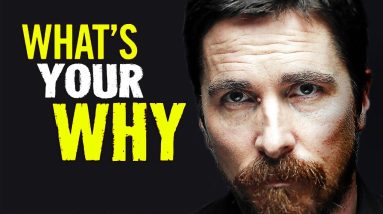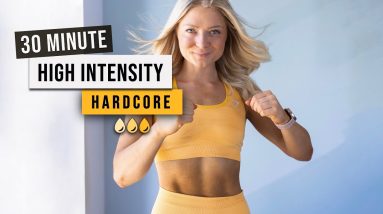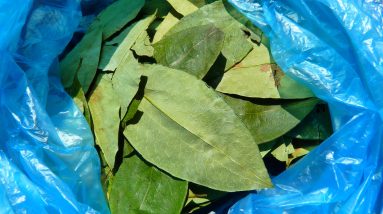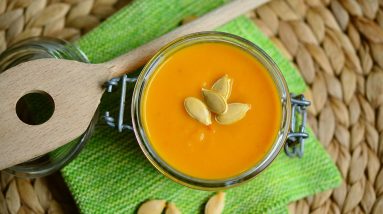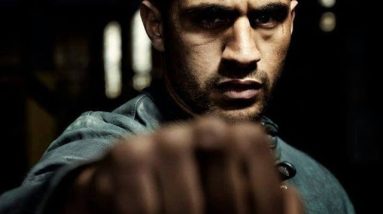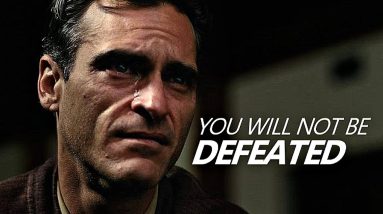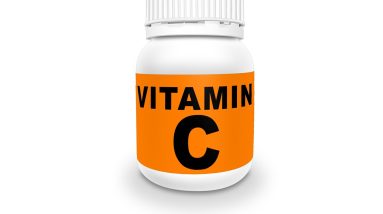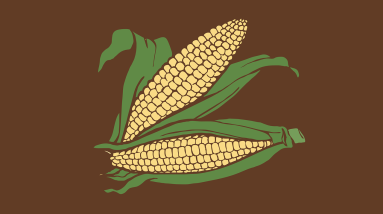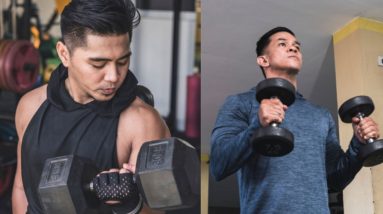
Building Bigger Arms: Comparing Hammer Curls to Biceps Curls
It’s go-time for your upper body. You’re ready to hit your biceps with enough chin-ups and curls to get the best pump you can. But once you pick up the dumbbells, you pause and contemplate: hammer curls versus biceps curls. Which is going to give you the most effective arm gains?
There’s a reason that the dumbbell biceps curl has been a staple go-to for gymgoers for decades. It’s easy to grab a pair of dumbbells, take them anywhere in the gym (but not the squat rack, please), and get a good pump going.
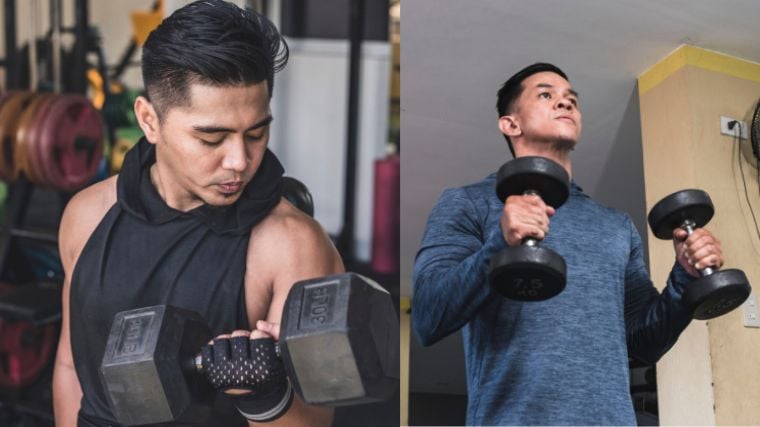 Credit: MDV Edwards / Shutterstock
Credit: MDV Edwards / Shutterstock
But if you’ve been steadily curling for a while, you may consider switching it up with hammer curls. Simply changing to a neutral grip alters the mechanics, muscles worked, and potential outcome of your curls. Here, you’ll learn all about which lift you should choose, and when.
Editor’s Note: The content on BarBend is meant to be informative in nature, but it should not be taken as medical advice. When starting a new training regimen and/or diet, it is always a good idea to consult with a trusted medical professional. We are not a medical resource. The opinions and articles on this site are not intended for use as diagnosis, prevention, and/or treatment of health problems. They are not substitutes for consulting a qualified medical professional.
Table of Contents
- Key Differences
- Key Similarities
- Muscles Worked
- When to Do Hammer Curls
- When to Do Biceps Curls
- How to Do Hammer Curls
- How to Do Biceps Curls
- Benefits of Hammer Curls
- Cons of Hammer Curls
- Benefits of Biceps Curls
- Cons of Biceps Curls
- FAQs
Key Differences
If you use them correctly, both types of curls can help you forge bigger arms. But they’re not exactly the same thing. Changing your grip makes a big difference in emphasis, and therefore in what kinds of results you’re likely to see.
- Hammer curls use a neutral grip with your palms facing each other. Biceps curls use a supinated grip with your palms facing up.
- Because of the grip, hammer curls work your forearms and outer biceps muscles (long head). Although your forearms also contribute, biceps curls isolate your inner biceps muscles (short head) more effectively.
- Since hammer curls require more extensive buy-in from your forearms, they can give your overall arms a thicker appearance. Biceps curls dramatically emphasize your biceps for that rounded biceps look when you flex.
- The neutral grip of the hammer curl allows more of a “rest” at the bottom of each rep. On the other hand, the palms-up position of a biceps curl puts more tension on the biceps at the bottom of each rep.
- Because of this brief rest, the emphasis on a larger amount of muscle mass, and the neutral grip, many lifters can heft bigger dumbbells with hammer curls than biceps curls.
[Related: The 20 Best Biceps Exercises for Greater Growth]
Key Similarities
Changing the grip doesn’t change everything about these lifts. Both are still tremendous accessory exercises that can help bring your biceps to the next level.
- The hammer and biceps curls both increase strength and stimulate hypertrophy in your biceps.
- Both exercises work your pulling muscles, which can carry over to your other lifts.
- Hammer curls and biceps curls are some of the best grip strengtheners that focus on your biceps.
- Both moves help to stabilize your wrists.
Muscles Worked
Both exercises work your biceps brachii muscles. Your biceps brachii consist of a long head and a short head. (1)
Hammer curls work your biceps brachii and emphasize the long head. They also work your brachialis and brachioradialis muscles. Your brachialis is on your outer upper arm and is your strongest elbow flexor — it’s responsible for bending your arm at your elbow. (2)
Your brachioradialis is located on your outer forearm. You might associate this one with oft-sought-after forearm thickness. It plays a big role in flexing your forearm and elbow — so it’s not just about aesthetics. (3)
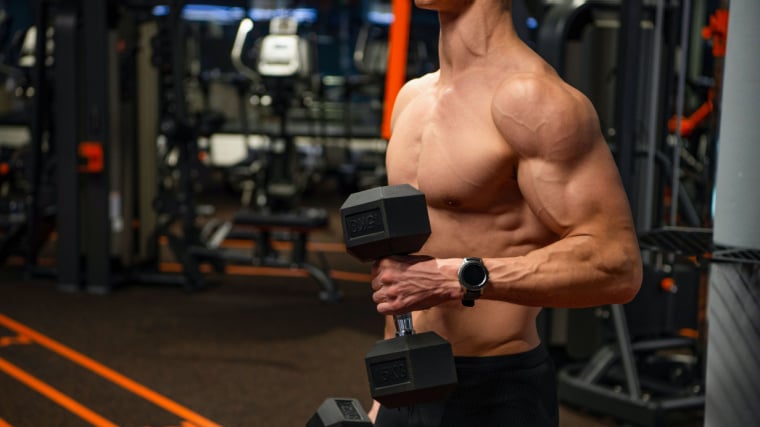 Credit: Just dance / Shutterstock
Credit: Just dance / Shutterstock
[Read More: 12 Best Supplements for Muscle Growth of 2023]
For their part, biceps curls specifically work your biceps brachii and focus more on the short head. These muscles work to flex and supinate your forearm. (1)
Your biceps brachii also assist in shoulder stability. Biceps curls can strengthen and grow your inner upper arms — think, being able to keep steady at the bottom of a chin-up. Although your brachialis assists in flexing your elbows, it is not targeted as much as it is in hammer curls.
When to Do Hammer Curls
Deciding when to do each type of curl comes down to what you’re trying to get out of your training. Here are a few situations when hammer curls may be the better choice.
You Want Overall Thicker Arms
Athletes in pursuit of bigger arms need to break out the hammer. Since hammer curls work the muscles on the lateral part of your upper and lower arms, this lift can give your arms an overall thicker, wider, and larger appearance.
Vary Your Biceps Training
Adding variety to your training program is one way of applying the principles of progressive overload. Performing variations on exercises you’ve been doing for a while can help you break through strength training plateaus, target different muscles, and prevent overuse or injury.
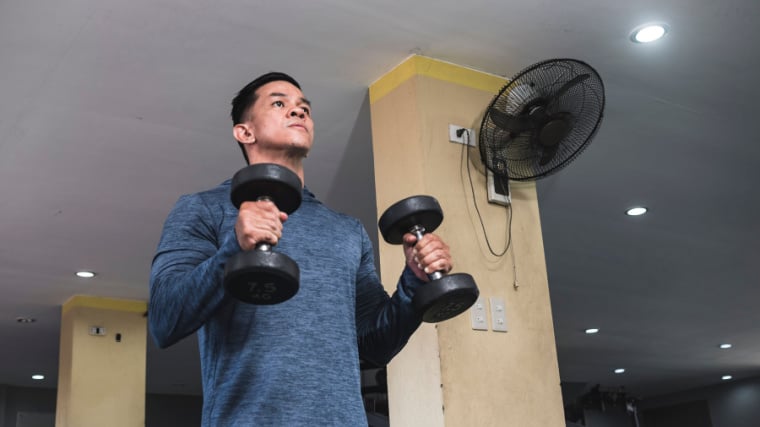 Credit: MDV Edwards / Shutterstock
Credit: MDV Edwards / Shutterstock
[Read More: The 15 Best Triceps Exercises for More Mass and a Bigger Bench Press]
If you’ve been doing classic biceps curls and want to try a variation, try swapping in hammer curls during your next training block.
Recovering From Injury
Biceps curls can be tough on your shoulders and wrists when you go heavy. Switching your grip in hammer curls can spare your shoulders some extra strain while recruiting more muscles to assist your curls.
And if you’re already recovering from wrist, elbow, or shoulder injuries, the neutral grip in hammer curls may be more comfortable than the supinated grip in biceps curls. That’s because it changes the position of your shoulders.
With clearance from a medical professional, you may want to restart your journey with hammer curls. Still, you’ll have to go a little lighter to rebuild your strength.
When to Do Biceps Curls
Biceps curls have been popular for decades for a reason. Here are a few times they might be the optimal choice.
You Want Rounder Biceps
If the upper part of your T-shirt is your biggest concern, standard biceps curls are a solid choice. Biceps curls isolate, target, and build up that classically round peak of your inner biceps.
In addition to dumbbells, you can do biceps curls with a barbell or curl bar. That means you can go a lot heavier with them, potentially increasing your hypertrophy potential.
Improve Your Pull-Up and Chin-Up
If you’re aiming to get your first pull-up or increase your training volume, biceps curls help you purely strengthen your biceps. So if you’re trying to master your first pull-up, biceps curls can be a big help.
[Read More: The One-Month-Long Beginner Pull-Up Program]
Of course, you’ll also have to seriously work on strengthening your back — but you also want your biceps to come in clutch and help you out.
Biceps curls target your biceps to flex your elbows which is one of the joint actions in a pull-up. With biceps curls, you’ll repeat this movement pattern and get your body ready to fully extend your arms under pressure.
You Need Accessibility
Biceps curls are an accessible exercise for older folks, beginners, or anyone returning to exercising after a period of inactivity. You can do them while seated and start with very light dumbbells.
Hammer curls can also be accessible for this reason. But biceps curls are more of an isolation exercise that doesn’t require as much grip strength or use of other muscles.
[Read More: Bodybuilding For Beginners — Your Ultimate Guide for Getting Started in the Gym]
It’s also not just about beginners. Advanced lifters navigating a crowded gym or working out from home can grab dumbbells and grow their arms without much fuss.
How to Do Hammer Curls
Here’s a step-by-step breakdown of how to do your hammer curls with good form to avoid or train through injury and get the most out of your work.
- Inhale to brace your body. On an exhale, curl your weights toward your shoulders by bending your elbows and maintaining a neutral grip.
- Squeeze your biceps and hold for a moment at the top.
- Slowly lower down and focus on eccentric arm training by controlling the lowering portion. You’ll be lengthening of your biceps, brachialis, and brachioradialis.
- Maintain core tension throughout the lift. Try to use control and not momentum. Repeat for your desired number of reps and sets.
What You Need
You will only need yourself and a pair of weights. Dumbbells are generally the most accessible way to perform hammer curls. But you can also use resistance bands, kettlebells, or a cable machine.
Setting Up
Grab your weights. Stand tall with your feet shoulder-width apart. Extend your arms fully straight by your sides. Hold your weights with a neutral grip and palms facing each other. Stand with your hips tucked, glutes squeezed, and abs engaged. Keep your shoulders depressed, spine neutral, and chest up.
How to Do Biceps Curls
Follow these steps to hit your biceps curls with good form.
- Inhale to brace and then exhale as you curl your weights up towards your shoulders, flexing at your elbows and keeping your palms face up. Keep your wrists neutral throughout the movement.
- Squeeze your biceps at the top and hold.
- Lower your weights slowly and feel the stretch through your biceps as you straighten your arms. Keep your wrists neutral and don’t let your weights pull them into extension.
- Keep your shoulders depressed, wrists neutral, and core engaged. Move with control and try not to be led by momentum. Repeat for your desired set and rep range for your goal.
What You Need
You just need yourself and a pair of weights for hammer curls. Use dumbbells, kettlebells, or a cable machine. You can also do barbell curls or do the move with an EZ bar.
Setting Up
Choose your equipment and grab it. Stand tall with your feet shoulder-width apart. Extend your arms fully straight and keep them close to your body.
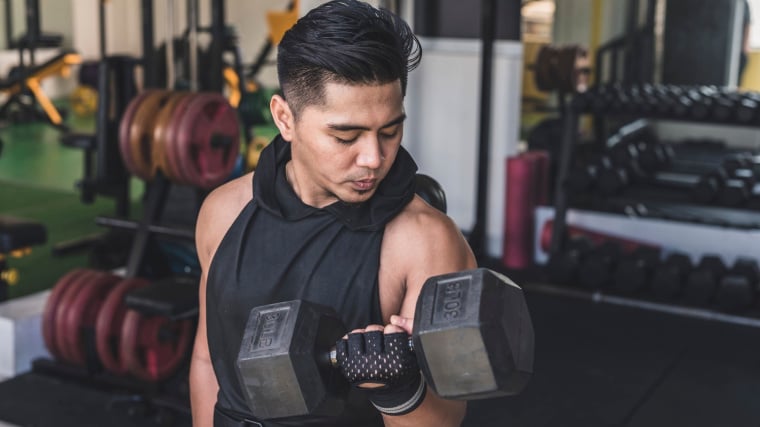 Credit: MDV Edwards / Shutterstock
Credit: MDV Edwards / Shutterstock
Hold your weights with your palms facing up. Stand in a line of tension with your hips gently tucked. Squeeze your glutes and engage your core. Depress your shoulders, maintain a neutral spine, and keep your chest slightly up.
Benefits of Hammer Curls
Some of the best biceps exercises have an extra-special oomph for other muscle groups. The hammer curl is one of these, as it packs an extra wallop for your forearms. Here’s how these neutral-grip curls can help you out.
Builds Brachialis and Brachioradialis
Hammer curls uniquely target your outer arm muscles on your upper and lower arm. This is beneficial for aesthetic goals as it can help give your arms a larger, thicker, and wider appearance. This also gives you a more balanced look when you are growing your arms than solely targeting your inner biceps.
Potential to Lift Heavier
Hammer curls and biceps curls are both single-joint exercises, but hammer curls recruit more muscles to perform the joint action. If you use dumbbells in both hammer curls and biceps curls, you may be able to lift a bit heavier over time with hammer curls. That’s because your outer arm muscles are assisting in the lift.
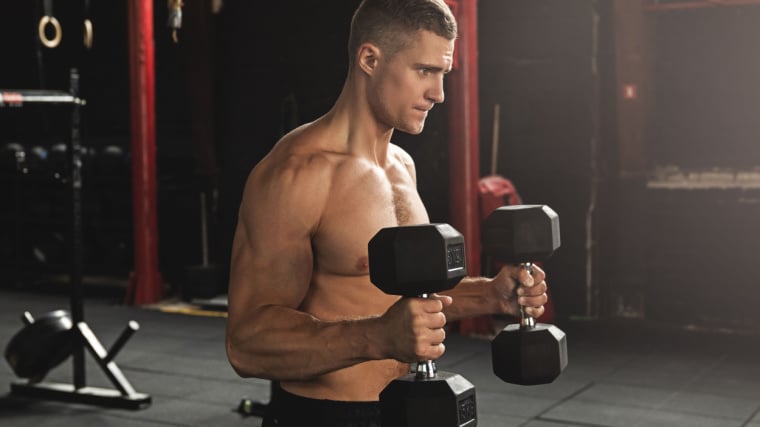 Credit: BLACKDAY / Shutterstock
Credit: BLACKDAY / Shutterstock
[Read More: How to Deadlift 500 Pounds (and More)]
Hefting more weight can lead to the potential to build muscle and strength in your program over time.
Increase Functional Grip Strength
Hammer curls can build more functional grip strength than biceps curls. Because you’re using a neutral grip, the movement pattern is similar to grabbing, lifting, and carrying objects like heavy groceries.
Having strong forearm muscles can carry over to activities of everyday life, as well as other sports, athletic activities, and heavy lifts.
Cons of Hammer Curls
Though it can be a functional exercise with aesthetic benefits and the potential to grow, it can be really tough for some folks to start.
Tough on Grip
On the flip side of hammer curls being great to improve your grip strength, they also require a lot of grip strength to be able to do them properly in the first place. If your forearm muscles haven’t been worked much before, your grip may give out even before your biceps do.
You may want to start with a pair of lighter dumbbells than you expect. But with patience and consistency, you’ll be able to reap the benefits of grip strength.
Won’t Grow Round Biceps Alone
Hammer curls target your outer arms, which will indeed help round off your biceps. But they’re not enough on your own. Hammer curls don’t emphasize and tax your inner biceps as much as biceps curls. You’ll need to combine these with other movements to stimulate maximum growth.
[Read More: The 11 Best Supplements for Bodybuilding (2023 Update)]
If you only have time for one isolation exercise and your goal is big, rounded, inner biceps, you might want to opt for biceps curls.
Limited Equipment
Due to the nature of a neutral grip, you can’t really do hammer curls with a barbell. You can grab a multi-grip camber bar if your gym has one, but many do not. So, you might be limited to dumbbells. If you prefer curling with a barbell, you’ll likely have to stick with the supinated biceps curls.
This may limit your progression in hammer curls, but there are other ways to progress exercises besides continually adding load. You can try tempo training with hammer curls to emphasize the eccentric portion and get a greater stretch.
Benefits of Biceps Curls
Biceps curls are pretty straightforward — they increase the size and strength of your biceps. This can be beneficial for physique and aesthetic goals as well as the overall strength, health, and stability of your upper arms and nearby joints.
Aesthetic Gains
Your inner biceps can be some of the most pronounced areas of your arms. With biceps curls, you’ll isolate your biceps muscles to elevate your flexing that much closer to Arnold’s.
Whether you’re a competitive bodybuilder or a weekend warrior who..
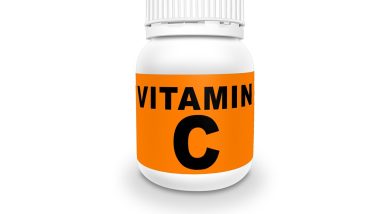
Rise and Shine: Discovering the Top 10 Healthiest Breakfast Options for a Nutritious Start to Your Day
…
10 Fitness Icons Who Achieved Remarkable Abs in the History of Bodybuilding
All physique athletes need a solid set of abs — it’s a virtual prerequisite before stepping on stage. But a select group of bodybuilders went beyond the standard six-pack and crafted midsections that singlehandedly won them shows and helped vault them to icon status.
If you need some inspiration to do extra crunches or cardio when you hit the gym next, look no further than this list of 10 bodybuilders with the best abs in the sport’s history.
10 Bodybuilders With Some of the Most Chiseled Abs in the Sport’s History
- Natalia Abraham Coelho
- Sarah Villegas
- Shawn Ray
- Chris Bumstead
- Frank Zane
- Ryan Terry
- Shawn Rhoden
- Lou Ferrigno
- Dexter Jackson
- Andrea Shaw
Natalia Abraham Coelho
Natalia Abraham Coelho is one of the most popular athletes in Women’s Physique. She scored the Olympia crown in her division in 2022 and followed that up with two wins mere months later at the Pittsburgh Pro and New York Pro.
View this post on Instagram
A post shared by Mitchell Gilbert (@gilcoproductions)
[Related: The Best Ab Workouts for Strength, Beginners, Muscle Mass, and More]
And while Coelho’s muscular upper body can certainly turn heads, her real highlight is a deep, flawless set of abs that ties together any front pose she hits. Not only is it her calling come showtime, but she never lets herself get too far from that condition in the off-season, which helps her in guest posing events or when she’s taking photos during training.
Sarah Villegas
Before Coelho’s Olympia win in 2022, Sarah Villegas laid claim to the Women’s Physique crown in 2020 and 2021. She was known for her unrivaled conditioning and supremely detailed back development, but her core ranks among her greatest assets.
View this post on Instagram
A post shared by Sarah Villegas (@iamsarahfit)
[Related: 10 Athletes With the Best Chests in Men’s Bodybuilding]
Villegas’ waist is so narrow, her abs so tight, that they actually accentuate her already top-flight shoulders, making them look even wider. She’ll go into a rematch with Coelho at the 2023 Olympia in November, hoping to surpass her rival on the biggest stage of them all. Ultimately, the battle might come down to who has the best abs.
Shawn Ray
Standing 5’6″ and hovering around 210 pounds, Shawn Ray knew he would never be the biggest competitor on stage, especially when standing next to the likes of Lee Haney, Dorian Yates, and Ronnie Coleman. So rather than allow his smaller stature to be a detriment, he instead focused on making the best out of what size he did have, including being the most ripped athlete in the lineup.
View this post on Instagram
A post shared by Shawn Ray (@shawnrayifbbpro)
[Related: Who Is the Strongest Mr. Olympia Winner?]
Ray was the epitome of conditioning in his prime, with visible striations and a six-pack that looked like stacks of bricks. This level of definition helped Ray win the big prize at the 1991 Arnold Classic and place second to Dorian Yates at the Mr. Olympia contest in 1994 and 1996.
Chris Bumstead
One of the reasons why Chris Bumstead has scored four Classic Physique Olympia titles (so far) is that he keeps finding ways to get better year after year. It started with a renewed effort to build up his arms in 2019, and that was followed by a shift in focus to his abdominals around 2020.
A combination of smart dieting and consistent core training has helped CBum keep the centerpiece of his physique looking on point every Olympia. He may be one of the biggest men in his division, but he can also hit a vacuum pose worthy of the Golden Era. It shouldn’t come as much of a surprise, then, that he’s still considered the perfect model of Classic Physique.
Frank Zane
Frank Zane’s vacuum pose is one of the most enduring images from bodybuilding in the 1970s. The complete mastery of his midsection helped elevate “The Chemist” from being just another aesthetic athlete to becoming an all-time great. His look was so timeless, in fact, that it eventually went on to help inspire the creation of the Classic Physique division back in 2016.
View this post on Instagram
A post shared by Frank Zane (@therealfrankzane)
[Related: The Best Non-Stim Fat Burners]
The sheer definition of Zane’s abs, along with his supreme posing, is why he was able to defeat Arnold Schwarzenegger at the 1968 IFBB Mr. Universe contest and win three Mr. Olympia titles from 1977-1979 against much larger competitors. To this day, you can argue that no athlete perfected a single body part like Zane did with his abs.
Ryan Terry
Ryan Terry is among the most decorated athletes in the Men’s Physique division, having won both the 2016 Arnold Classic and 2023 New York Pro titles. And, sure, the athletes in the division don’t have to hit as many individual poses or be as big as their Men’s Open counterparts — but that just means their abs need to be even more sublime if they want a chance to win. They can’t hide a lackluster core behind 275 pounds of muscle, after all.
View this post on Instagram
A post shared by Ryan Terry
(@ryanjterry)
[Related: The 25 Best Back Exercises for Strength and Muscle Gain]
In Terry’s case, he has arguably the best midsection in the entire class. His minuscule waist and chiseled six-pack don’t just look great on their own — they also make the rest of his body look better in the process. These features will be invaluable to him as he looks to score his first-ever Olympia title in 2023.
Shawn Rhoden
The late Shawn Rhoden won his first and only Mr. Olympia back in 2018 by famously unseating seven-time champ Phil Heath in Las Vegas. The big topic of conversation heading into that show was Heath’s abs, which had been lacking in previous years and were affected by an injury that impacted his 2018 off-season training.
View this post on Instagram
A post shared by Shawn Rhoden (@flexatronrhoden)
[Related: 12 of the Most Underrated Bodybuilders of All Time]
While any injury is bad luck, Heath’s chances dimmed even more when Rhoden walked on stage sporting a flawless set of abs that harkened back to the Golden Era. You can argue that Rhoden’s core was the biggest factor in Heath losing his crown that night.
Lou Ferrigno
Lou Ferrigno‘s physique was admired far beyond bodybuilding thanks to his iconic role in The Incredible Hulk. The two-time Mr. Universe winner competed at 6’5″ and weighed in a range of 275-305 pounds at his peak. And while you can find smaller waists and more chiseled six-packs throughout the history of bodybuilding, you’d be hard-pressed to find better abs on anyone Ferrigno’s size.
View this post on Instagram
A post shared by Lou Ferrigno (@theofficiallouferrigno)
[Related: Lou Ferrigno’s Hulking Comeback at the 1992 Mr. Olympia]
Anytime Ferrigno hit an ab pose on stage, he was an instant contender to pull off a victory. That commitment to staying ripped has stayed with him far beyond his years as a competitor — even in his 70s, he isn’t afraid to pull up his shirt to reveal a six-pack.
Dexter Jackson
As the 2008 Mr. Olympia winner and five-time Arnold Classic champion, Dexter Jackson always delivered on conditioning when he stepped on stage. Like Zane, Jackson is famous for his abs and thigh pose that showcases the serratus, obliques, and even the rare eight-pack.
View this post on Instagram
A post shared by Dexter “The Blade” Jackson (@mrolympia08)
[Related: 9 of the Most Controversial Moments in Olympia History]
Those abs helped Jackson win 29 shows, making him the only man to win the Mr. Olympia, Masters Olympia, and Arnold Classic in his career. With a nickname like “The Blade,” you had to know his razor-sharp abs would make this list.
Andrea Shaw
Andrea Shaw is a three-time Ms. Olympia and three-time Rising Phoenix World Champion. She may have great arms and legs, but her ab shots may be the best. When she goes into an abs and thigh pose, no one has come close to matching her midsection development or her conditioning.
View this post on Instagram
A post shared by Andrea Shaw (@mzprettymuscle)
[Related: Why Iris Kyle Is Undoubtedly in the Bodybuilding G.O.A.T Conversation]
Shaw is going into the 2023 contest season with hopes of winning both of her titles for a fourth straight year, and her abs are one of the reasons why she can pull it off.
Featured Image: @therealfrankzane on Instagram
The post 10 Bodybuilders With Some of the Most Chiseled Abs in the Sport’s History appeared first on BarBend.
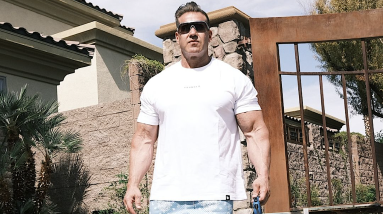
Get Ripped like Jay Cutler: 8 Arm Exercises to Crush Your Fitness Goals
Four-time Mr. Olympia Jay Cutler is one of the most popular bodybuilders of all time — known for his full chest, giant arms, and striated quads. Cutler started a “Fit for 50” challenge in early 2022 with the goal of achieving his best shape since stepping away from competitive bodybuilding in 2013.
Cutler’s 50th birthday is on Aug. 3, 2023. On June 9, 2023, the former Olympia champ took to his YouTube channel to share his most recent arm workout without seven weeks left to fulfill the goal of the “Fit for 50” challenge. Check it out below:
[Related: The Innovations of Derek Lunsford’s Back Progression During His Off-Season]
Jay Cutler “Fit for 50” Arm Workout
Cutler’s high-volume arm workout consisted of eight exercises:
- Cable Triceps Pushdown (bar attachment) — 2-3 warm-up sets & 3-4 working sets
- Iso-Lateral Triceps Extension Machine — 3 x AMRAP (as many reps as possible)
- Seated Overhead Dumbbell Extension — 3 x 12
- Cable Triceps Pushdown (rope attachment) — 3 x 12
- Iso-Lateral Biceps Curl — 3 x 12
- Standing Dumbbell Curl — 3 x 12
- Machine Preacher Curl — 3 sets
- EZ Bar Curl — 4 sets
[Related: Flex Lewis Breaks Down How He Trained During His Olympia Reign]
Triceps Pushdown & Iso-Lateral Triceps Extensions
Cutler begins his arm training with cable triceps pushdowns with an angled bar attachment. He performs “two or three warm-up sets” followed by “three or four working sets.”
Cutler’s top set had the weight pin at 120 pounds on the cable machine‘s weight stack. Unlike most bodybuilders who prefer to keep their body weight out of biasing the load, Cutler performs pushdowns while leaning on the bar.
I don’t care what anyone says; it works for me.
Moving to the iso-lateral triceps extension machine, Cutler placed his triceps on the raised upper-arm pads to remove the necessity to stabilize the weight. This not only maintains tension on the triceps but also removes the potential use of momentum. Cutler performed three sets to failure.
Seated Overhead Dumbbell Extension & Cable Rope Pushdown
Cutler performed 12 reps for each set. He maxed out with an 80-pound dumbbell on his third set. He avoids locking out his elbows at the top of the movement so the tension remains constant on the triceps throughout the full range of motion.
The cable rope pushdown was the last exercise of Cutler’s triceps routine. He performed three sets, maxing out with put pounds on the cable. Cutler used a bent-over stance, helping him maximize his elbow extension during the concentrics.
Iso-Lateral Biceps Curl & Dumbbell Curl
Cutler opens his biceps routine with the iso-lateral curl machine. Stabilizing his triceps on the elevated pads on the machine helps Cutler’s mind-muscle connection, ensuring the load is moved solely by contracting the biceps. Cutler did three sets of 12 reps.
View this post on Instagram
A post shared by Jay Cutler (@jaycutler)
After achieving a biceps pump in the previous exercise, Cutler repped out alternating dumbbell curls. The Olympia champ performed three sets of his favorite arm movement with 45-pound dumbbells on his last set.
Machine Preacher Curl & EZ Bar Curl
Cutler prefers training on machines to help maintain constant tension on the target muscles. The preacher curl is similar to the other machines utilized in the workout in that the pads stabilize the arm to place all the tension on the biceps. He performed three sets.
Cutler finished his arm workout with cambered bar curls. He did four sets with a 70-pound fixed barbell. Cutler used Fat Gripz for the last two sets for greater forearm stimulation.
The Fit For 50 Challenge
Cutler’s target body weight is 250 pounds in the next eight weeks, though he didn’t reveal his current weight at the time of the video’s recording. He currently eats six meals daily to maintain an elevated metabolic rate.
I’m going for the best shape I’ve been in 10 years. I’m going to be full, hard, and round…not super shredded.
Although Cutler won’t compete at the 2023 Masters Olympia, scheduled for Aug. 26-27 in Romania, he hasn’t ruled out the possibility of guest posing at a future show. His fans might see him grace the stage again after he completes the “Fit for 50” challenge.
Featured image: @jaycutler on Instagram
The post Jay Cutler’s Eight Arm Exercises For His “Fit for 50” Challenge appeared first on BarBend.
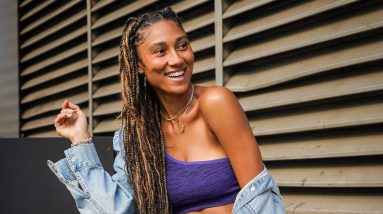
Ally Love, Peloton Trainer, Shares How Color Can Boost Your Workout Intensity – Check Out Her Top Picks from the Brand’s Latest Collection
When you tune in to one of Ally Love’s Peloton classes, there’s a secret clue you can look for that will tell you just what kind of ride you’re in for that day: the color of Love’s Peloton outfits.
“I allow my look to influence and speak to the vibe, the feeling, the dynamic, the intensity of the class I’m leading,” Love says. “If I’m coming out in pink, you know we’re having a good time. If I’m coming out in reds or something dark, then we’re likely going right into climbing hills.”
Can it really be that one-to-one? Love feels strongly that the way she dresses both impacts and mirrors her mood. So much so that in high school, if she got dressed in a hurry and ended up in a “blah” outfit, she’d sometimes end up feeling down—so her friends would switch some clothing around with her to brighten her day. “From a young age, what I [wore] impacted my mood and my perception of my experience,” Love says.
That impulse carries over today. “I do try to align my outfit with the way I want people to feel within the class experience,” Love says. “I’m pretty strategic about what I pick out to wear especially for my Peloton classes. I try to pick colors that literally correspond with the perceived exertion. Everything about me is aligned with the amount of intensity (or this lack of intensity), so it’s important to me.”
For someone whose mood is so affected by and reflected in her clothing, Love puts a lot of care into choosing the garments she puts on her body, including her Peloton outfits. Which is why, when it comes to her outfit recommendations, you know she’s not choosing lightly. From the bike to the street to the office, here are some of Love’s favorite (colorful) pieces from Peloton’s Spring collection. Keep an eye out from them the next time you join one of her rides—it might be clue for how fast and furious you’ll be peddling.
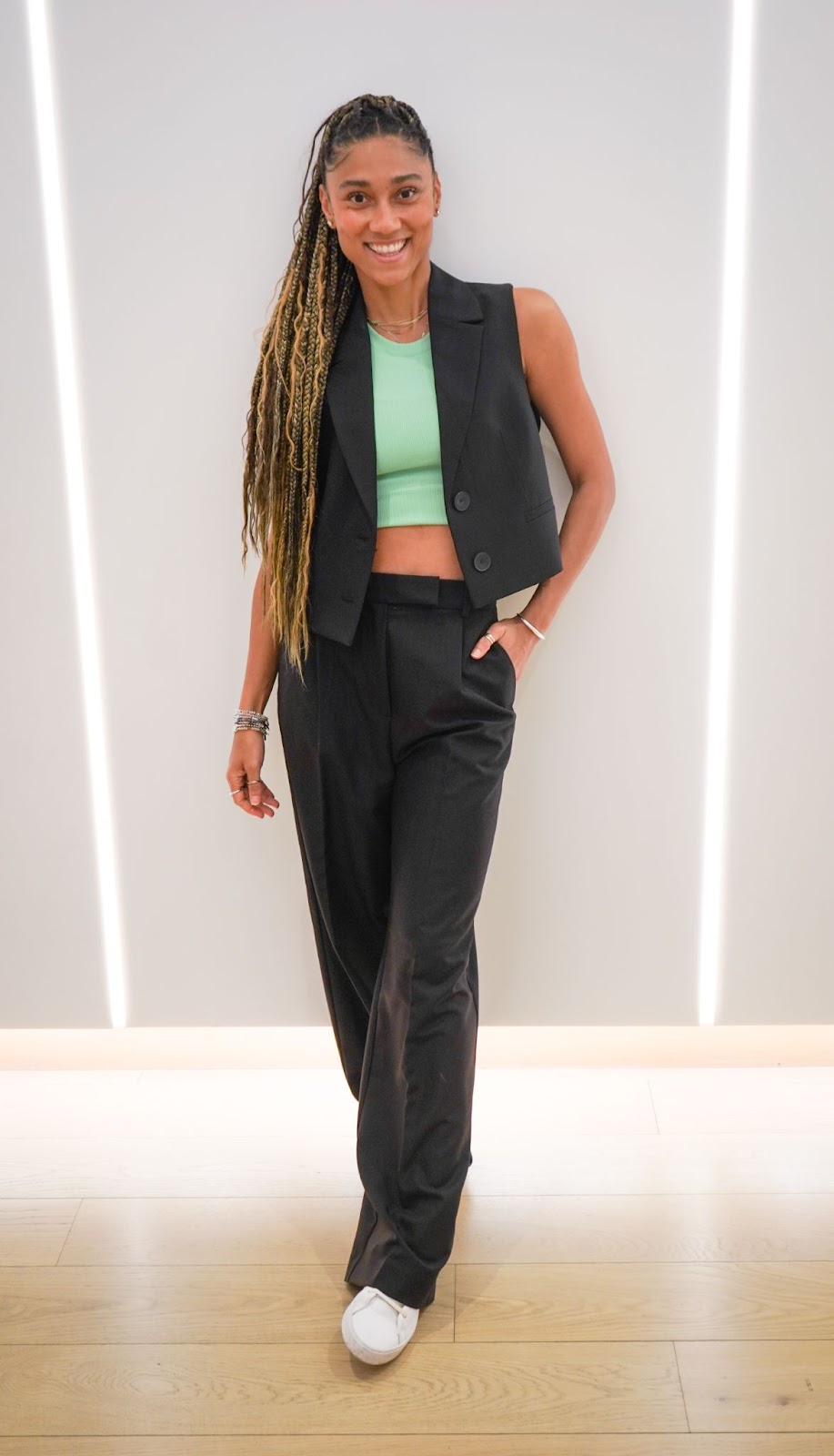
Available sizes: XS-XL
Love says you can pair this cool, minty green tank top with more than leggings, like trousers and a blazer, jeans, skirts, and more, making it a multi-purpose garment worth a spot in your wardrobe. When you do wear it to ride, however, the performance fabric will go the distance to keep you comfortable. The soft, stretchy fabric moves with you, so you won’t have to worry about chafing, digging in, or holding you back.
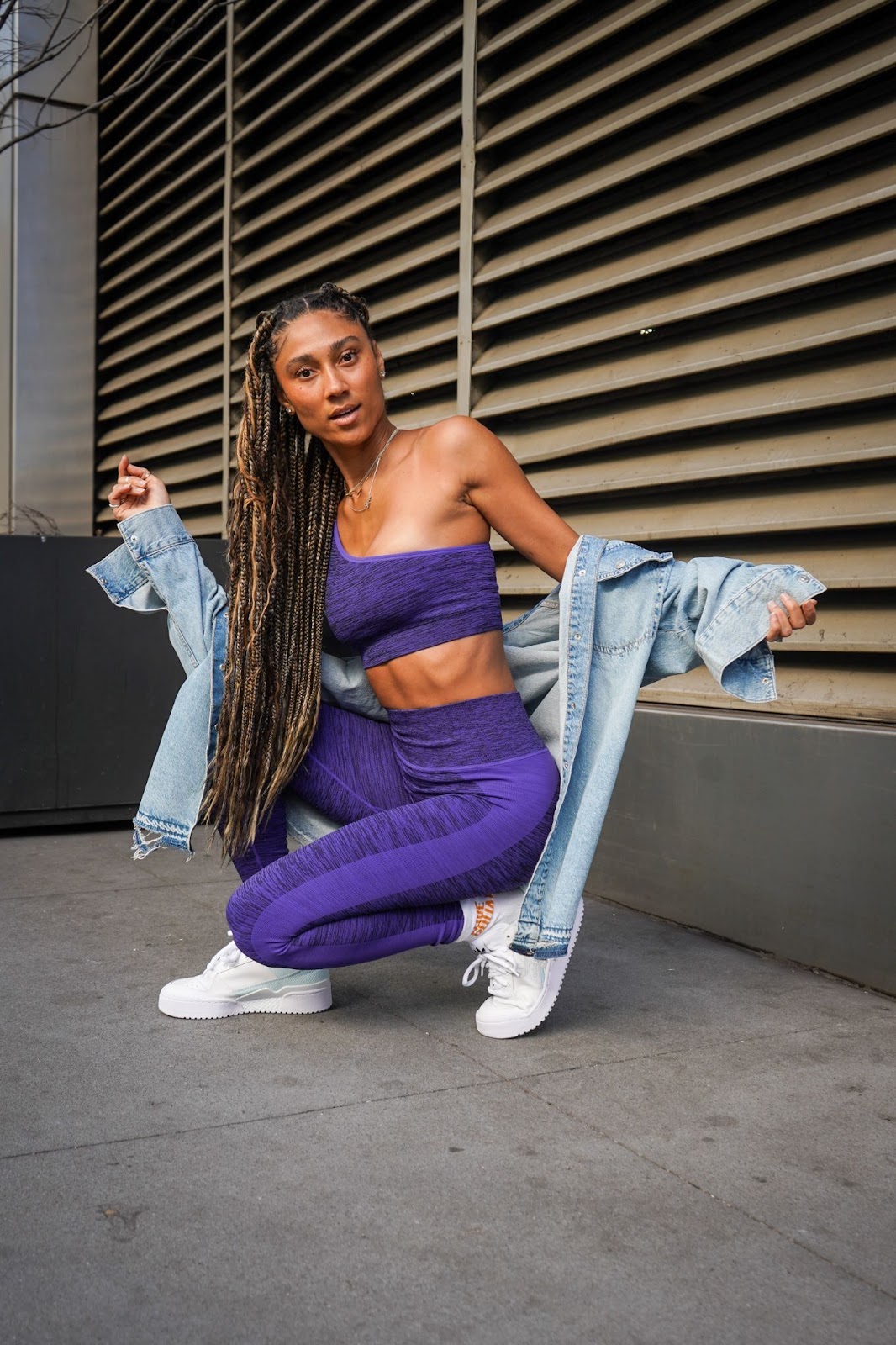
Love likes to wear matching workout outfits that she elevates with a sweatshirt or an oversized button down. Take this one-shoulder sports bra, for example. The seamless, longline cut looks stylish and trendy underneath jackets, sweaters, and other layers. While it’s probably not supportive enough for high-intensity sweat sessions, it’s perfect for low-impact workouts like yoga, stretching, and walking.
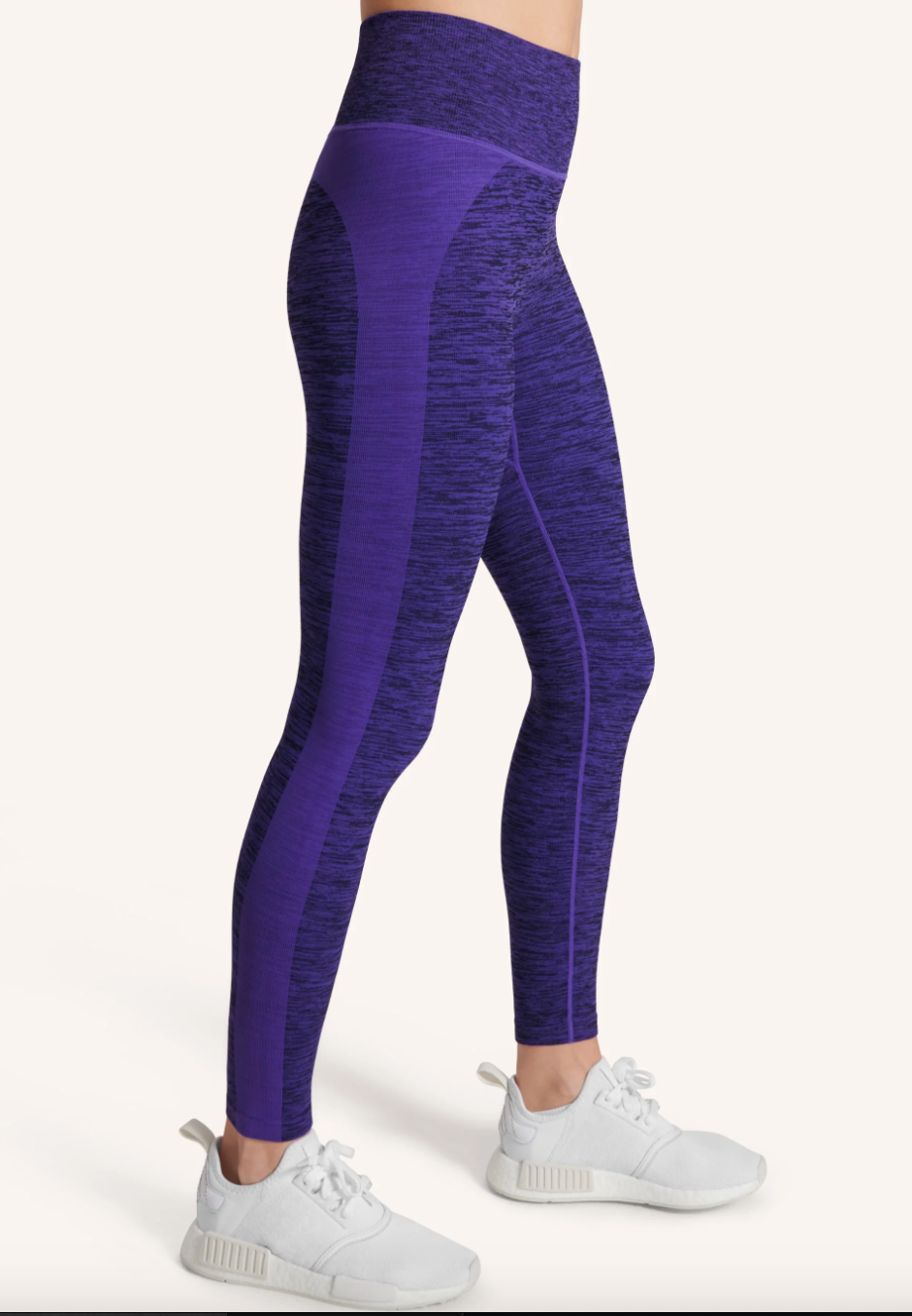
If you want to get matchy matchy with your workout wardrobe, pair the above sports bra with these matching purple leggings. The solid stripe down the leg shows the world you mean business, while the buttery smooth, flexible fabric keeps you comfy, whether you’re stretched out in yoga class or on your couch.
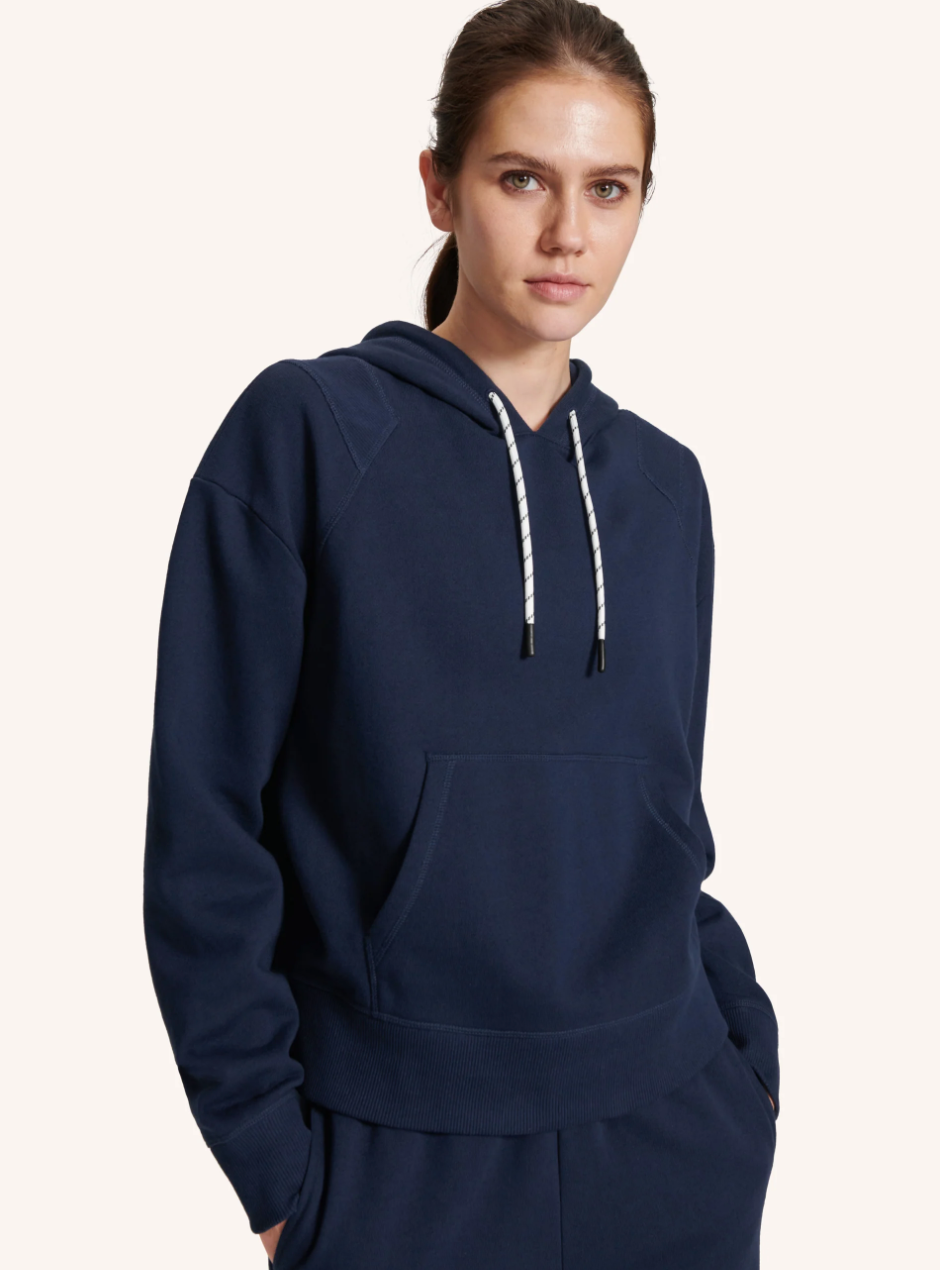
Go navy blue for when you want some business-meets-cozy, work-from-home vibes. This classic hoodie is made from French cotton terry that’s perfect for all seasons and looks as chic as it is snuggly. Expect everything you want out of a timeless hoodie, including a kangaroo pouch and drawstring hood. Only this one has a back-rib insert detailing in a v-shape that give it some edge from all the other sweatshirts in your closet.
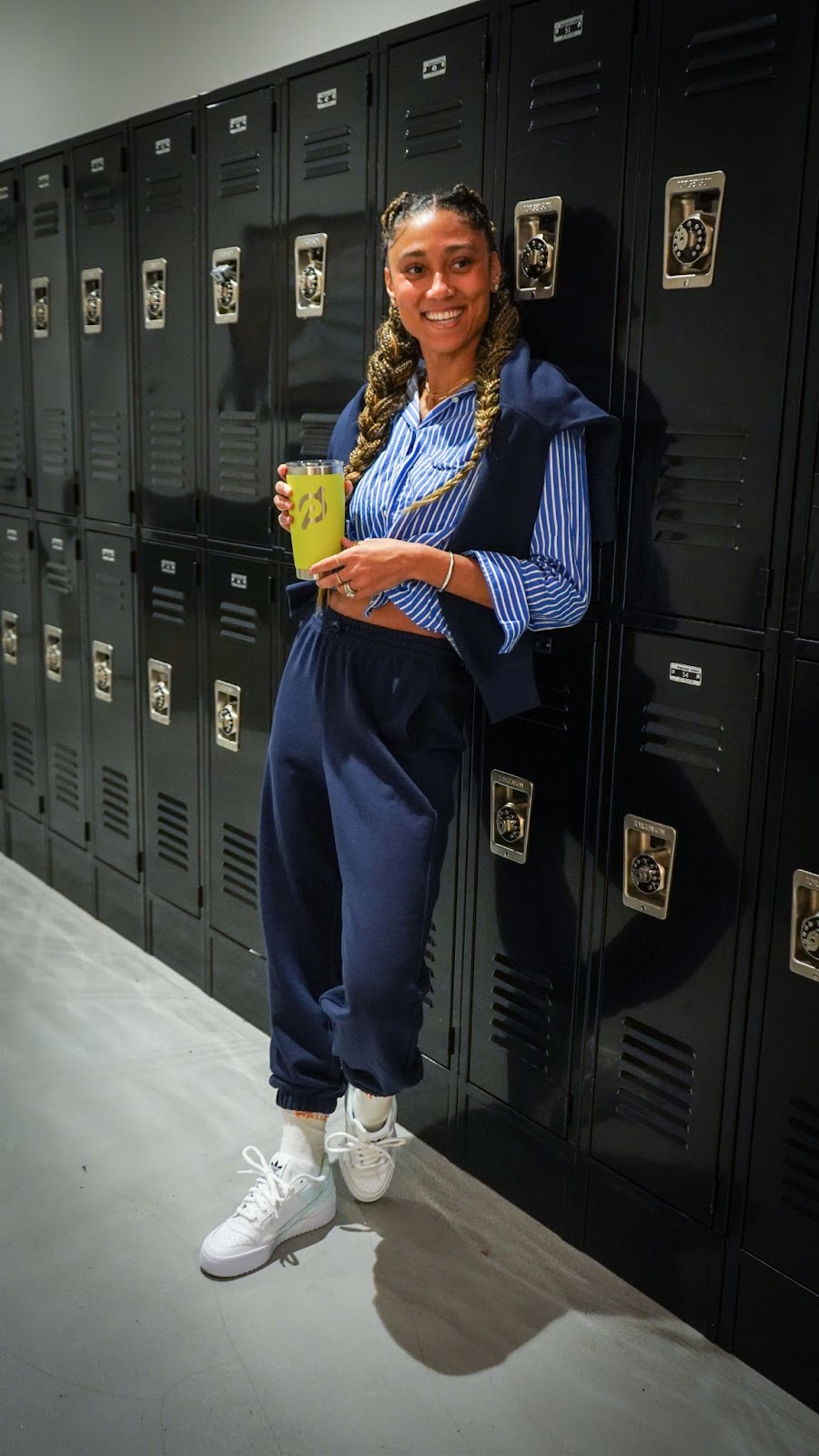
Love pairs the above hoodie with a preppy button-down and the matching sweatpants for a polished, scholastic look. But the good news is, you don’t have to dress them up; they go just as well with workout tops, sports bras, camisoles, and more. Just like Love suggests, wear whatever feels good to you and matches your mood.



